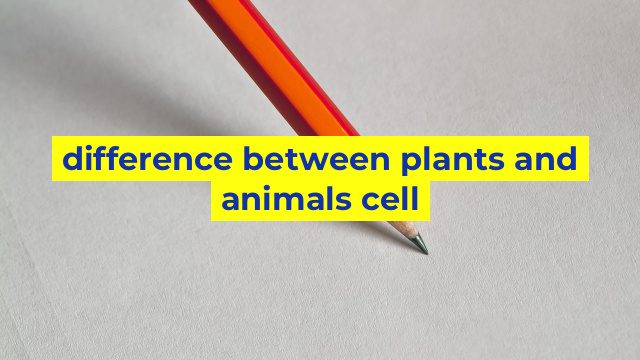Difference between Plants and Animals Cells
Introduction
Both plants and animals are living organisms, but their cellular structures are quite different. In this article, we will explore the key differences between plant and animal cells.
Cell Structure
The most apparent difference between plant and animal cells is in their cell structure. Both types of cells have a cell membrane and a nucleus, but plant cells also have a cell wall and chloroplasts. The cell wall in plants provides structural support and gives the plant its shape, while the chloroplasts are responsible for photosynthesis.
Cell Shape
Another difference between plant and animal cells is their shape. Plant cells tend to be rectangular or square-shaped, while animal cells are round or irregularly shaped. This difference in cell shape is related to the presence of a cell wall in plants, which provides structural support and maintains their shape.
Vacuoles
Vacuoles are also present in both plant and animal cells, but their size and functionality differ. Plant cells typically have one large central vacuole, while animal cells have several smaller vacuoles. The central vacuole in plants is responsible for storing water and nutrients, while the smaller vacuoles in animal cells are involved in storing waste products.
Lysosomes
Lysosomes are organelles present in animal cells that are responsible for breaking down waste material. Plant cells, on the other hand, do not have lysosomes. Instead, their waste material is broken down by vacuoles or recycled into the chloroplasts.
Mitochondria
Both plant and animal cells have mitochondria, but they differ in their number and location. Plant cells usually have fewer mitochondria than animal cells, and they are also found closer to the cell wall. Animal cells, on the other hand, have more mitochondria that are scattered throughout the cytoplasm.
Conclusion
There are several key differences between plant and animal cells, including their cell structure, shape, vacuoles, lysosomes, and mitochondria. Understanding these differences helps us appreciate the unique adaptations of each type of organism and the specialized functions of their cells.
Table difference between plants and animals cell
| Plants | Animals |
|---|---|
| Cell wall present | Cell wall absent |
| Chloroplast present | Chloroplast absent |
| Vacuole large and permanent | Vacuole small and temporary |
| Centrosome absent | Centrosome present |
| Nucleus located at the periphery of cell | Nucleus located at the center of cell |
| Autotrophic in nature | Heterotrophic in nature |


